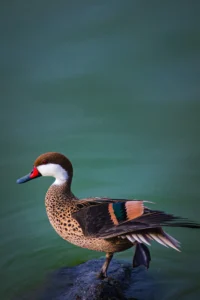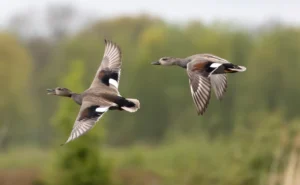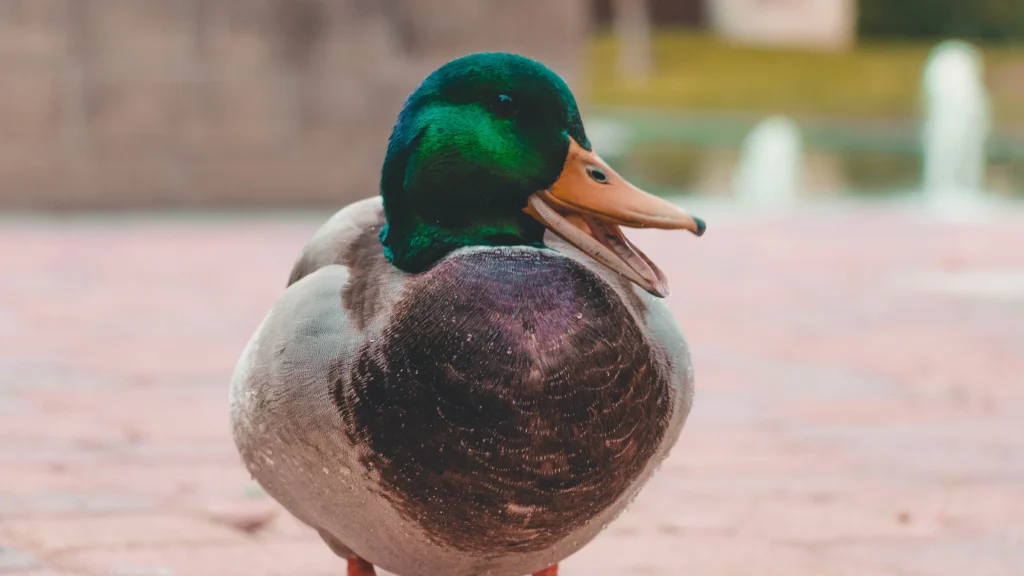Welcome to Texas duck hunting, where the night sky is filled with more than just stars.
Texas is not just known for its wide-open areas and cowboy culture; it is also a mecca for duck hunters looking for exhilarating outdoor excursions. This large state offers a plethora of outstanding hunting areas that would wow even the most seasoned waterfowlers, from coastal marshes to beautiful lakes and twisting rivers.
So grab your shotgun, load up on ammunition, and prepare to dig into our in-depth guide to the top Texas duck hunting areas. Everything from selecting the correct equipment to mastering decoy setups and attracting those gorgeous birds into range will be covered. Whether you’re a first-time hunter or a seasoned veteran, this article will give you valuable suggestions and tactics to improve your hunts and create experiences to last a lifetime.
It’s time to answer nature’s call as we visit some of Texas’ best duck hunting spots. Let’s get started right away!
A Comprehensive Guide to Texas Duck Hunting
The opportunities for Texas duck hunting are as numerous as the Lone Star State itself. From waterfowl-filled coastal marshes to tranquil lakes and meandering rivers, this diverse terrain provides a plethora of chances for hunters looking for their next thrill.
With their extensive wetlands and plentiful food supplies, coastal marshes are a perfect home for ducks. Matagorda Bay and Galveston Bay are excellent locations for putting up blinds or wading through marsh grasses in quest of your quarry. These wetlands attract a wide range of species, including pintails, gadwalls, and mallards, making them a hotspot for exciting hunts.
For those who prefer calmer waters, Texas has many lakes and reservoirs that are favorite duck hunting spots. Lake Ray Roberts and Lake Fork provide beautiful scenery and plenty of shelter for both hunters and birds. Set up your decoys strategically along the shorelines or stake them out in a boat hidden among the reeds. These strategies will allow you to get closer to your prey while remaining undiscovered.
If you like riverine settings, Texas also has plenty to offer in that department. During the winter, the Trinity River system is renowned for attracting thousands of migratory waterfowl. These environments offer intriguing challenges that will put your talents to the test, from flooded forest areas where mallards take sanctuary to shallow backwaters favoring teal.
Choosing the appropriate shotgun and ammo for your Texas duck hunt is critical if you want to make every shot count. Choose a 12-gauge shotgun with an upgraded or modified cylinder choke, depending on your intended shooting distance. When it comes to ammunition, use non-toxic loads like steel or bismuth in sizes suited for the sort of ducks you’ll be hunting.
Decoys are crucial in drawing ducks within range. Invest in high-quality decoys that approximate the realistic poses and postures of the species you’re after.
related post
Best Texas Duck Hunting Spots
Marshes on the coast
Coastal wetlands in Texas provide some of the most extraordinary duck hunting in the state. These environments attract a broad range of waterfowl species throughout the year due to their enormous expanses of wetlands and diversified flora.
The proximity to the seaside is a significant benefit of hunting in coastal wetlands. This implies that migrating ducks may easily reach these sites each year. As a result, hunters may expect to encounter a variety of species at various times, making for an exciting and dynamic hunting experience.
Look for places with dense stands of emergent vegetation, such as bulrushes or cattails, when exploring for suitable hunting locations. These provide excellent cover for both hunters and ducks. Pay close attention to any open pockets of marsh where ducks may eat or rest.
When hunting in coastal wetlands, correctly placing decoys is critical. Combine puddle ducks and diver decoys to attract a greater variety of animals. Calls should be used sparingly yet effectively to simulate natural duck sounds and bring them closer.
Always keep safety as your primary concern when hunting in any area, even coastal marshes. Be mindful of fluctuating tides, hidden hazards such as buried logs or stumps, and the unpredictability of weather conditions.
Coastal wetlands in Texas provide several options for excellent duck hunting. Understanding the environmental preferences and behavior patterns of various waterfowl species and using successful methods such as correct concealment and calling strategies can boost your chances of having a fantastic hunt on these lovely wetlands!
Reservoirs and lakes
Texas lakes and reservoirs provide excellent duck hunting chances. These bodies of water attract a broad range of waterfowl species throughout the season due to their different habitats.
Scouting is an essential consideration while hunting on lakes and reservoirs. Spend time examining the birds’ routines, feeding places, and flight trajectories. This information will assist you in adequately positioning yourself for a successful search.
Setting up a realistic spread for decoys can make all the difference. Consider utilizing floating and fixed decoys to create an intriguing scenario simulating natural bird activity. Remember phone calls! Learning different duck sounds can aid in luring ducks into range.
When hunting on open water, camouflage is essential. To successfully blend in with your environment, use blinds or natural covers. Choose waterproof gear to stay dry and comfortable for extended hours in the dark.
Mallards, pintails, gadwalls, teal, wigeons, and other common duck species can be found in lakes and reservoirs. Each species has its own behavior and preferences, so become acquainted with them before venturing into the field.
Always adhere to Texas state requirements regarding each species’ licensing permits and bag restrictions. Additionally, remember the waterfowl hunting season dates in your chosen location.
Now that you’ve learned about duck hunting on Texas lakes and reservoirs, let’s move on to another intriguing habitat: riverine habitats!
Riverine Environments
Riverine environments provide a unique and diversified hunting experience for Texas ducks. Rivers, creeks, and streams weave across the landscape to create these environments. They provide ducks with a plentiful food supply and safe nesting locations.
The change in water levels throughout the year is one of the benefits of hunting in riverine ecosystems. This provides various shallow and deep water pockets, attracting a wide range of waterfowl species. Mallards, teal, and wood ducks are regularly seen in these locations.
To efficiently hunt in riverine ecosystems, investigate the region ahead of time to locate prospective feeding and roosting areas. Setting up decoys near submerged logs or vegetation will help you attract passing ducks.
When hunting in riverine areas, using calls is particularly essential since they assist in simulating natural duck noises and drawing them closer to your location. Before going out into the field, practicing your calling tactics is critical.
When selecting camouflage clothes for riverine ecosystems, use designs that fit nicely with the flora around shorelines or neighboring forested regions. This will keep you hidden from wary ducks.
Before going on your duck hunting experience in Texas’ riverine ecosystems, verify state restrictions about license requirements and bag limitations!
So be ready to explore these beautiful rivers and immerse yourself in the exhilarating world of Texas duck hunting!
Essential Equipment and Gear
Ammunition and shotguns:
Having the correct shotgun and ammo is critical for duck hunting in Texas. The most common gauge for duck hunting is 12 gauge, which provides a nice mix of power and recoil. Some hunters, however, prefer lighter choices like the 20-gauge or even the 28-gauge.
Steel shot is the preferred ammunition for waterfowl hunting because of its non-toxicity. Make sure to use duck-specific shells, such as those branded “waterfowl” or “duck loads,” which are normally available in shot sizes ranging from #2 to #4.
Before traveling out into the field, it’s critical to pattern your shotgun with several loads. This will assist you in determining which load and choke combination delivers the best performance over a range of distances. Consider utilizing a modified or improved cylinder choke for closer shots inside the decoy range.
When handling guns, keep in mind that safety should always come first. Use good gun handling practices and always adhere to state restrictions about safe shooting distances from other hunters.
Choose your shotgun intelligently depending on your choice and comfort level, whether you’re utilizing a trusted 12-gauge pump-action or a more lightweight alternative like the 20-gauge semi-automatic. Combine it with steel shot ammunition designed exclusively for waterfowl hunting to ensure ethical game harvesting and conformity to regulatory standards.
Decoys and Calls: Attracting Ducks to Your Hunting Location
When it comes to duck hunting in Texas, employing decoys and sounds to attract ducks to your hunting site is critical. Duck decoys replicate their looks, while calls imitate their noises. They work together to create a realistic atmosphere that entices ducks to approach.
It is critical to select the appropriate decoys. Look for decoys like the target species, such as mallards or pintails. Consider adopting a variety of stances and angles to make your spread appear more natural.
When it comes to laying up your decoy spread, placement is everything. Place them strategically on the water’s surface to resemble a feeding or resting duck flock. To provide variation, place some close together and others dispersed about.
Calls are another helpful weapon in your arsenal. They allow you to speak with passing ducks and persuade them that other birds are approaching. Duck calls come in various styles, including single-reed, double-reed, and even electronic cries.
It takes practice to master the art of calling. Learn fundamental species-specific quacks, greeting calls, feed chuckles, and return sounds. Calling should be used carefully until you build trust in your powers.
Remember that duck behavior and responsiveness to calling strategies might vary daily. Pay attention to how ducks behave throughout each hunt and make adjustments as needed.
Finally (Sorry about that! ), integrating efficient decoy deployment tactics and well-executed calling skills can dramatically boost your chances of success while duck hunting in Texas! So get out there, put up those decoys like an expert, and confidently blast those calls—happy hunting!
Camouflage and clothing
Regarding duck hunting in Texas, the appropriate clothes and camouflage may make or break the hunt. Ducks have acute vision; therefore, blending in with your surroundings is essential for a successful hunt.
To begin with, wearing layers is vital for remaining comfortable on the lake in the early morning hours. The weather in Texas may be unpredictable, so having a base layer, an insulating layer, and a waterproof outer layer on hand will guarantee you’re prepared for all situations.
Choose camouflage designs that are appropriate for the environment in which you will be hunting. Choose designs that mirror the natural colors and textures in the area, whether in a marsh or a riverine setting. Duck hunters choose Realtree Max-5 or Mossy Oak Shadow Grass camo.
Footwear is another significant part of apparel. Waterproof boots are essential for keeping your feet dry while wading through marshes or placing decoys along muddy shorelines. To avoid slipping on damp areas, choose boots with solid traction.
Accessories like gloves and face masks might help you blend in with your environment even more. These minor touches may make a significant impact when attempting to get wary ducks to approach.
Investing in excellent clothes and camouflage gear may appear to be an extra investment at first, but trust me when I say it’s well worth it. Being well-prepared will put you ahead of the competition and boost your chances of taking home some delectable ducks this season!
Texas Duck Species
Mallards
Mallards are one of Texas’ most prevalent duck species. They are a sight to behold for any enthusiastic hunter with their stunning green heads and vivid feathers. These ducks may be found across the state in various settings, making them a popular target for hunters.
It’s critical to understand mallards behavior and eating routines when hunting them. They are most at home in shallow freshwater marshes, flooded meadows, and ponds. Placing your decoys in these regions increases your chances of attracting them.
Regarding calling, Mallard hens produce quacking noises, but drakes make low-pitched, raspy cries. Using your duck call to mimic these noises may lure them closer to you.
Regarding shotguns and ammo, hunting Mallards is best done with a 12-gauge shotgun loaded with size 2 or 3 steel shots. This combination of power and range is sufficient to knock down these bigger birds.
Wearing camouflage apparel that complements the surroundings is vital for adequately blending in. It’s also critical to remain still and hidden while waiting for Mallards to fly by.
Targeting Mallards during the Texas duck hunting season may be a thrilling experience. Their abundance across the state makes them an excellent choice for both experienced hunters seeking a challenge and beginners ready to begin their waterfowl hunting adventure!

Pintails
Pintail ducks are a common kind of duck among Texas hunters. Pintails, which are known for their exquisite and unusual looks, may be found across the state during hunting season. These ducks like open water environments, including marshes, lakes, and reservoirs.
It is critical to have the proper equipment when hunting pintails. For these fast-flying birds, a shotgun with a modified choke is advised. Use steel shot sizes 2 or 4 as ammunition to guarantee a successful kill.
Setting up decoys is critical while hunting for pintails. Because they are gregarious birds that frequently congregate in large groups, utilizing many decoys will boost your chances of attracting them. Pintail sounds can also attract them closer by mimicking their particular vocalizations.
Wear camouflage gear that suits the environment you’ll be hunting in to blend in and avoid detection by watchful pintails. This will allow you to remain hidden from their keen gaze.
Pintails are well-known for their acrobatic flying talents and their rapid reaction speeds when frightened. Patience is essential when hunting these quick-moving ducks, as they can take flight at any time.
Before going on a Texas duck hunting excursion, always verify the laws for licensing and permits. Bag limitations differ according to area and species, so ensure you know the rules.
To summarize,
Pintail hunting demands expert skills.the proper tools,and awareness of their behaviors.By following these suggestions, you’ll improve your odds.The likelihood of a successful hunt And taking advantage of everything Texas has to offer Suitable for duck hunters!

Gadwalls
Gadwalls, sometimes known as gray ducks, are a favorite duck hunting target in Texas. These medium-sized ducks may be found across the state in various environments, including coastal marshes, lakes, and rivers.
The flexibility of gadwalls is one of the reasons why many hunters are drawn to them. They eat a wide variety of aquatic vegetation, seeds, and insects. This means they can be found in various bodies of water during the hunting season.
Camouflage is essential while hunting gadwalls. These ducks have keen vision and can detect anything out of the norm. It’s critical to blend in with your surroundings by wearing camo gear and erecting decoys that seem like they’re in their natural environment.
Gadwalls respond well to quiet quacks and feeding chatter calls when it comes to calling strategies. It’s critical to master these noises to get them closer to firing range.
Regarding firearms and ammo, most gadwall hunters utilize a 12-gauge shotgun loaded with No. 2 or 4 steel shot.
Remember that bag limits and hunting season dates may change depending on Texas Parks and Wildlife Department laws. Before you go on your quest, be sure you have the most up-to-date information.
If you’re seeking an exciting duck hunting experience in Texas, targeting gadwalls is a must!

Regulations for Duck Hunting in Texas
Permits and Licensing
Regarding duck hunting in Texas, having the necessary licensing and permits is critical. This not only ensures that you are complying with all legal requirements, but it also aids in conservation efforts to conserve our waterfowl numbers.
To hunt ducks in Texas, you must have a valid Texas hunting license and a Federal Duck Stamp. The hunting license may be purchased online or at various retail outlets around the state. The Federal Duck Stamp is available for purchase online or at certain post offices.
It’s crucial to know that you may need to obtain extra licenses depending on where you want to hunt. If you hunt on public land that the Texas Parks and Wildlife Department maintains, for instance, a public hunting permit might be necessary.
Before going out into the field, make sure you know all the restrictions and bag limitations for the region you intend to hunt. This information is often available on relevant agencies’ websites or by calling local game wardens.
Remember that having the required licenses and permits guarantees compliance with state and federal regulations and helps develop long-term wildlife management methods that future hunters may enjoy. So, before you go duck hunting, make sure all of your documentation is in order!
Baggage Restrictions:
Understanding bag restrictions is critical while duck hunting in Texas. The maximum number of ducks a hunter may lawfully capture in a single day is called the bag limit. Wildlife management agencies impose these limitations to guarantee sustainable populations and conservation activities.
With a few exceptions, the bag limit for most duck species in Texas is six per day. Canvasback ducks, for example, have a daily bag restriction of two per day. Getting acquainted with these restrictions is critical before venturing into the field.
Staying below these restrictions assures compliance with state regulations and contributes to the conservation of duck populations for future generations of hunters. Responsible hunting methods are critical to preserving healthy ecosystems and waterfowl populations.
It is important to note that bag restrictions in Texas may vary based on the region or hunting zone. Always check local restrictions and contact wildlife officials or expert hunters to stay updated on any updates or changes.
Respecting bag limits and using ethical hunting tactics helps ensure the general health and sustainability of waterfowl populations while allowing you to enjoy your time in nature.
Dates of the Hunting Season
Now that you’ve learned everything about the greatest Texas duck hunting sites, tips, and tactics, it’s time to schedule your hunt around the hunting season dates. The Texas Parks and Wildlife Department (TPWD) determines the yearly duck hunting dates in Texas. To guarantee you have correct and up-to-date information on these dates, contact TPWD or visit their website.
Always observe TPWD’s laws and regulations governing bag limits, license requirements, and other limitations applicable to specific locations or species. Respecting the environment and using ethical hunting methods will help conservation efforts and improve your hunting experience.
So gather your gear, practice your abilities, select the best spot according to your tastes, and prepare for an unforgettable journey in one of America’s premier waterfowl locations—Texas! Good luck with your hunt!
Before organizing any hunting expedition, please check with local authorities or official sources for the most up-to-date information on license requirements, bag limits, and season dates and times.

